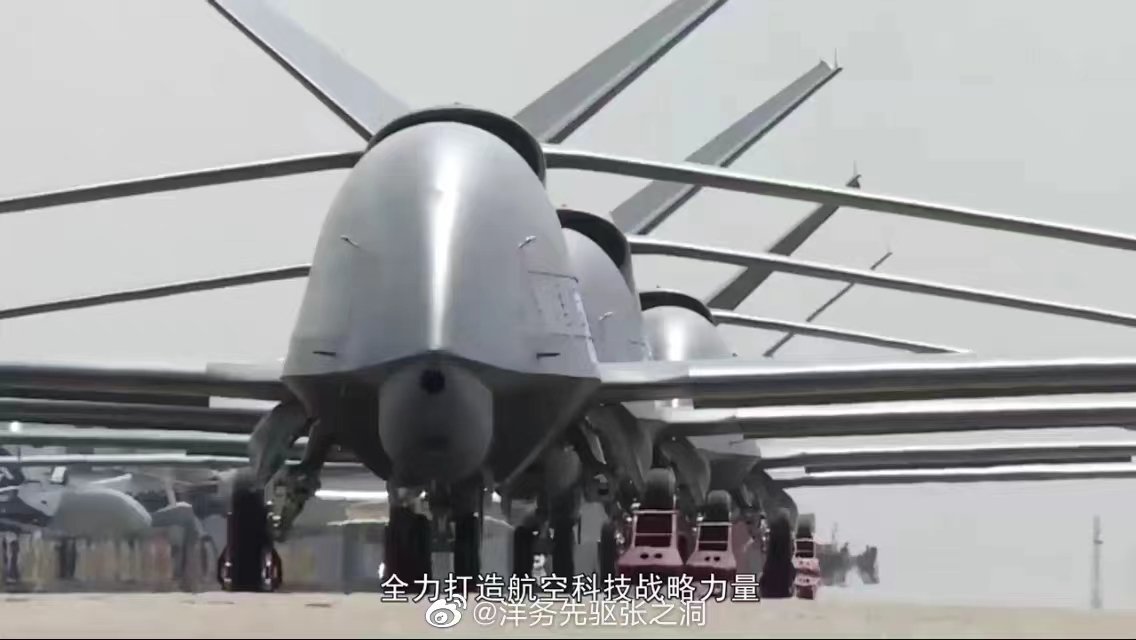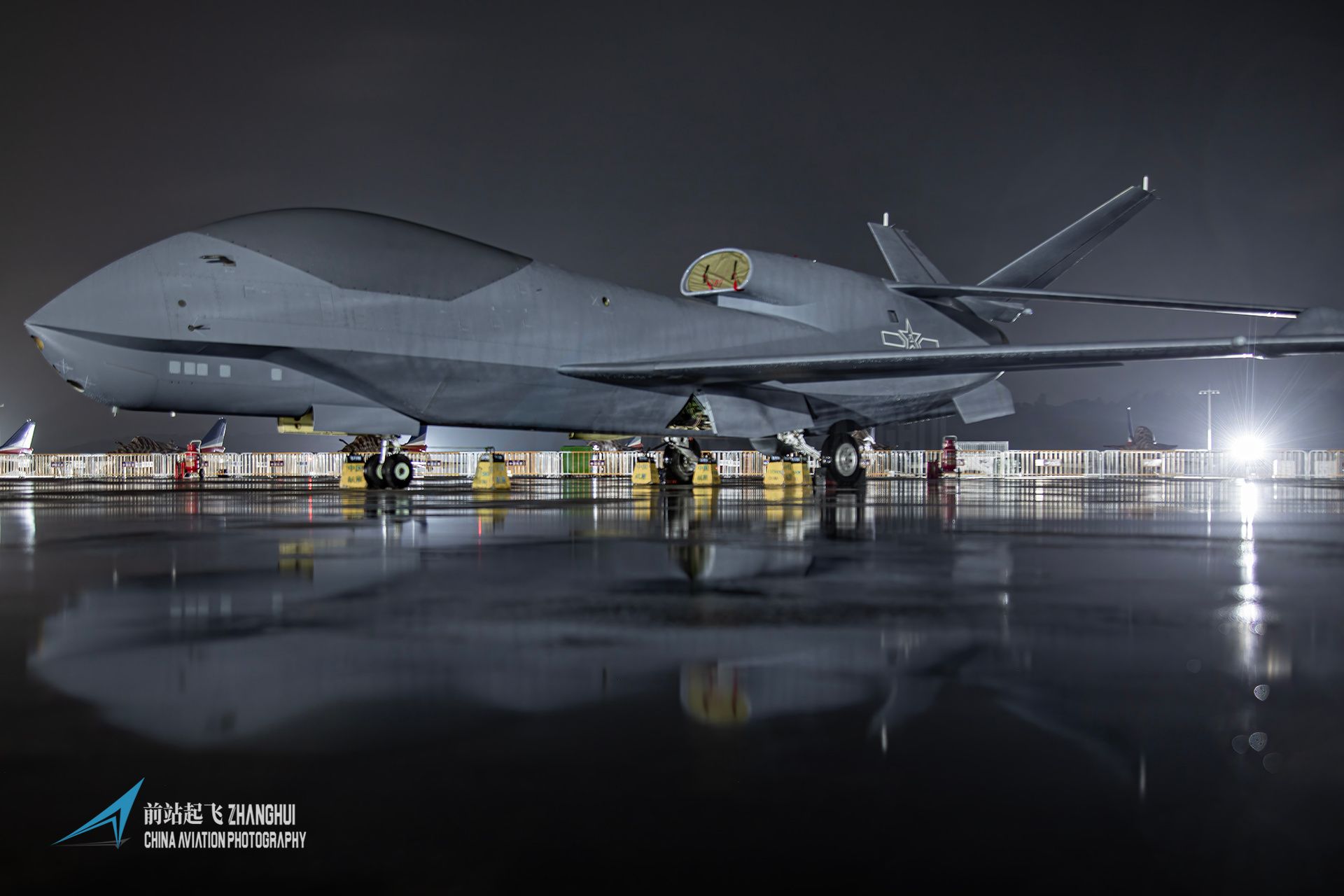An image of China’s WZ-7 Soaring Dragon, one of the most technologically advanced drones in the PLA’s arsenal, performing an elephant walk has gone viral on the internet.
The People’s Republic of China’s WZ-7 is a high-altitude, long-endurance unmanned aerial vehicle and is considered the Chinese version of the US RQ-4B Global Hawk HALE-class drone.
This drone is thought to have AI-enabled networking and sensor fusion, highly encrypted jamming-resistant data links to relay battlefield information with fighting units, and ISR links with Chinese satellites.
The image, which features at least three WZ-7 Soaring Dragon UAVs, has been shared by several Twitter users. However, neither the location nor the time the photo was taken is known.
Although another drone can be spotted in the distance, little is known about it. However, the image has drawn much attention online and sparked a discussion about Elephant Walk.

The term “elephant walk” first appeared during World War II, when massive fleets of bomber aircraft from allies would take off together to execute bombing raids. The sheer scale of the fleet, lined up in nose-to-tail formations, is similar to a big herd of elephants out on a walk.
An elephant walk appears to be nothing more than a bold exhibition of an air force’s firepower. It displays the enormous number of cutting-edge aircraft taking part in a military drill that serves as a warning to enemies.
The formation has tactical advantages since it allows an air force to demonstrate unit competence and teamwork. It is frequently used to train squadrons for wartime operations and pilots for the bulk launch of fully armed aircraft.
Earlier this month, China’s diamond-wing WZ-7 Soaring Dragon drones made headlines when it unexpectedly increased its operations over the East China Sea.
The WZ-7 was seen flying over the East China Sea on January 1, according to the Japanese Ministry of Defense (MoD). In response, the Japanese defense ministry was forced to scramble fighter jets.
Experts believe that the drone might start appearing more frequently in the area as regional tensions rise due to China’s aggressive actions towards Taiwan and its general expansion in the Indo-Pacific.
China’s WZ-7 Soaring Dragon
Regarding the WZ-7, its diamond-shaped wings, which are linked to forward-swept flying surfaces that end at the base of the vertical tail, are its most notable feature.
Developed by the Guizhou Aircraft Industry Corporation, the WZ-7 Soaring Dragon first appeared at the Zhuhai Air Show in 2021. The engine’s air intake is on top of the fuselage, and the main engine is in the back of the aircraft.
The drone’s design has undergone significant alteration since its debut in 2011 as a technology demonstrator. In late 2013, it reappeared in its updated form with canted vertical tail surfaces.
The redesign included V-tails, a new engine nozzle for the WS-13 turbofan engine, and alterations to the ventral fin and sail structure.
The WZ-7 is a jet-powered aircraft with a service ceiling of roughly 60,000 feet and an approximate range of 4,350 miles. Although its endurance is unknown, it is probably at least 10 hours, but the exact number for a typical long-endurance operation may be significantly greater.
The People’s Liberation Army Air Force, or PLAAF, and the PLAN use the WZ-7. The WZ-7 has been used extensively by the PLAAF in the Tibetan region to spy across the border into India. It has also been operated from the incredibly crucial Yishuntun Airbase near the North Korean border.

The capabilities of this drone are consistent with China’s ‘Intelligentized Warfare’ idea, as previously reported by the EurAsian Times. Some analysts predict that equipment like the WZ-7 and the J-16D, a new class of electronic warfare aircraft, will be employed in tandem, with the WZ-7 sharing surveillance data with the J-16D.
The J-16D would support other aircraft on their missions with electronic warfare (EW) support, including jamming, deception, and even signals intelligence (SIGINT). It carries sizable EW pods on both of its wingtips.
- Contact the author at ashishmichel(at)gmail.com
- Follow EurAsian Times on Google News




